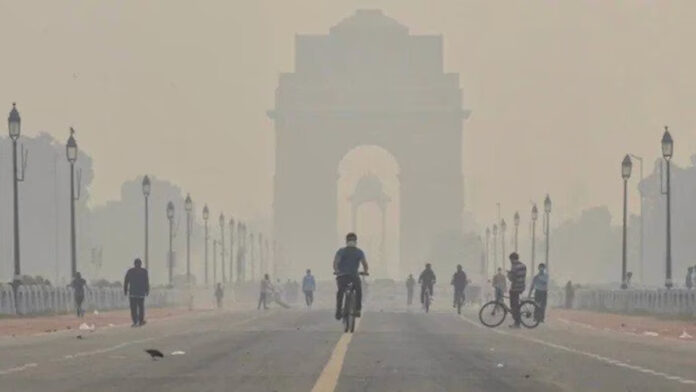Amid rising concerns over air pollution in the Delhi-NCR region, schools have been directed to transition to a hybrid mode of operation. The directive comes from the Directorate of Education (DOE), following recommendations by the Commission for Air Quality Management (CAQM). This approach aims to balance the educational needs of students with the health risks posed by deteriorating air quality.
The CAQM, citing provisions under the Graded Response Action Plan (GRAP), issued an order allowing hybrid classes for all students up to the 12th standard. The order specifies that state governments in the National Capital Region (NCR) and the Government of the National Capital Territory of Delhi (GNCTD) must ensure that both physical and online classes are available wherever feasible. This applies to Delhi and NCR districts such as Gurugram, Faridabad, Ghaziabad, and Gautam Buddh Nagar.
The Hybrid Mode: Balancing Physical and Online Learning
The CAQM clarified that the hybrid model gives students and their guardians the flexibility to choose between online and physical classes. This directive is intended to minimize disruptions to education while accommodating the practical constraints faced by schools and students.
The decision follows a Supreme Court directive to reassess restrictions on physical classes imposed due to hazardous air quality levels. The Court highlighted the adverse impact on students, including deprivation of mid-day meals and the inability to access resources necessary for online learning. The apex court’s concern stemmed from the prolonged exposure of students to these challenges, particularly in economically disadvantaged households.
Winter Woes: Air Pollution in Delhi-NCR
Air pollution in Delhi and northern India is a recurring issue, with the situation worsening during the winter months. From November to January, stubble burning in neighboring states, industrial emissions, and vehicular pollution contribute to hazardous air quality levels. The Air Quality Index (AQI) frequently crosses into the ‘very poor’ category, triggering severe health warnings and necessitating strict measures under GRAP.
On Tuesday, November 7, the AQI in Delhi was recorded at 392, categorized as ‘very poor.’ This level of pollution poses significant health risks, particularly to children, the elderly, and those with pre-existing respiratory conditions.
Under GRAP Stage-III and Stage-IV protocols, restrictions on physical classes were initially imposed to reduce exposure to harmful pollutants. However, these measures also disrupted education, especially for students in Classes 10 and 12, who require in-person attendance for practical lessons, tests, and tutorials crucial for board and competitive exams.
Addressing Educational Challenges
The CAQM acknowledged that many primary schools in the Delhi-NCR region lack the infrastructure to conduct fully online classes. This disparity has disproportionately affected students from underprivileged backgrounds, exacerbating the digital divide. The hybrid model aims to address these challenges by combining physical attendance with online learning options, ensuring inclusivity and continuity in education.

Students in Classes 10 and 12 have been particularly affected by the GRAP Stage-IV restrictions, which mandate the closure of physical classes. These students require hands-on learning for laboratory sessions and face-to-face guidance for exam preparation. Recognizing these needs, the CAQM urged state governments to prioritize hybrid learning for these critical classes.
A Region-Wide Implementation
The directive applies to all educational institutions, including schools and colleges, across Delhi and key NCR districts such as Gurugram, Faridabad, Ghaziabad, and Gautam Buddh Nagar. Schools and colleges in these regions have been advised to adopt the hybrid mode wherever feasible, ensuring minimal disruption to academic schedules while safeguarding students’ health.
A Collaborative Approach to Education Amid Crisis
The Supreme Court’s intervention and the CAQM’s subsequent directives underscore the need for a collaborative approach to managing education during environmental crises. By adopting the hybrid model, authorities aim to strike a balance between ensuring students’ academic progress and addressing public health concerns.

While the hybrid system presents logistical challenges, it is a pragmatic solution to the unique difficulties posed by Delhi-NCR‘s air pollution crisis. As authorities and institutions adapt to this model, the focus remains on minimizing educational disruptions while prioritizing the health and well-being of students.

